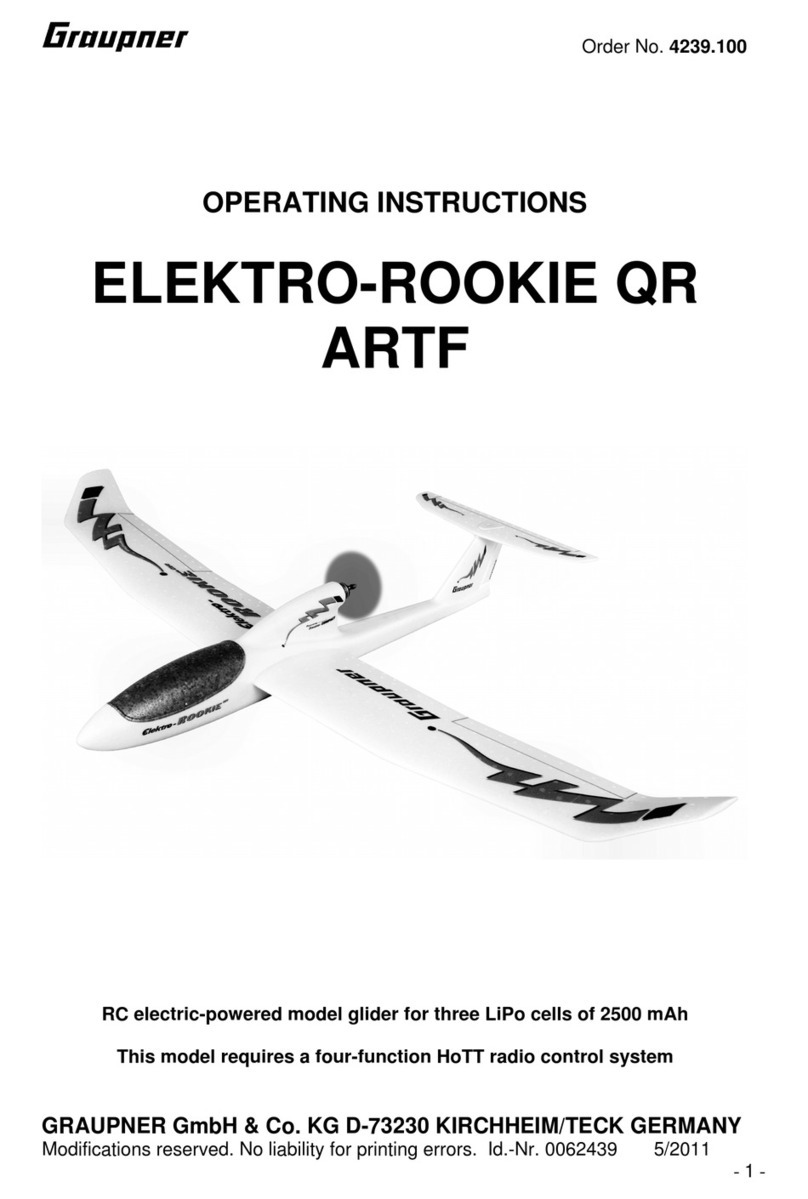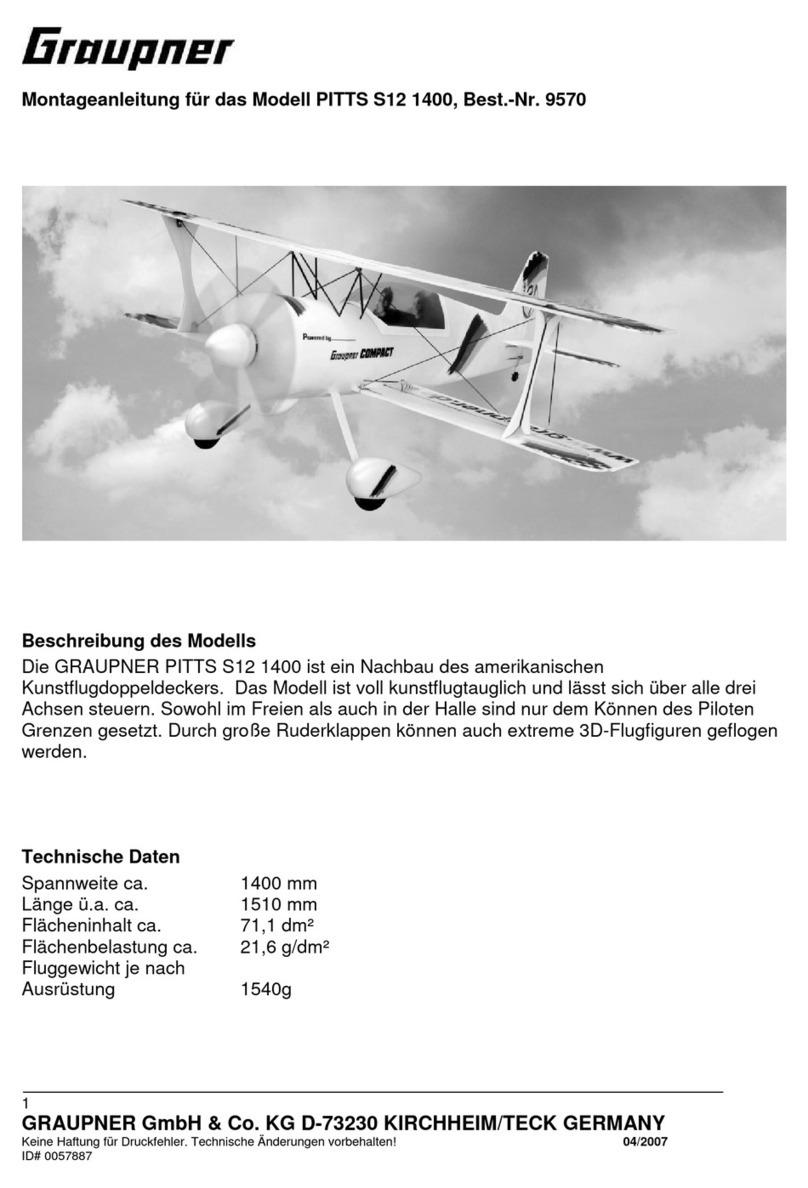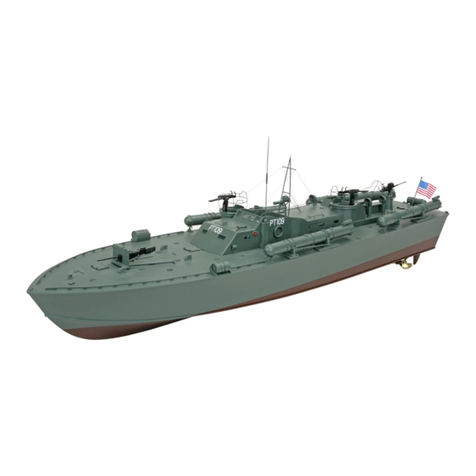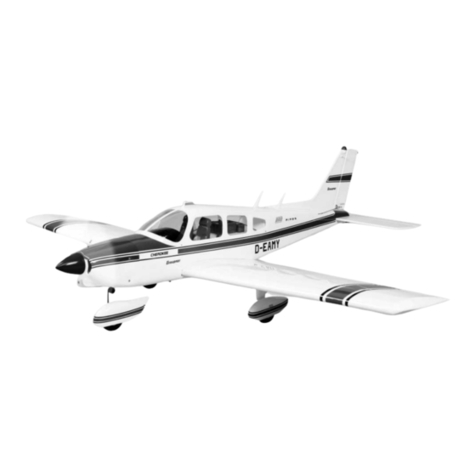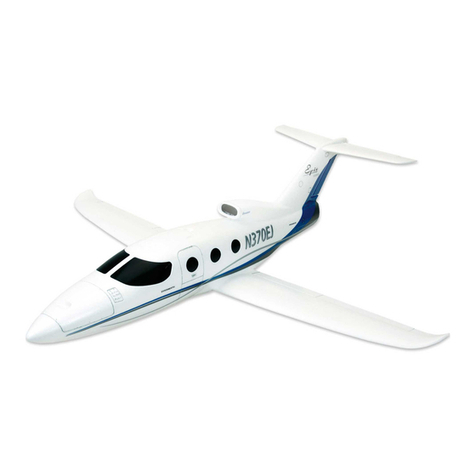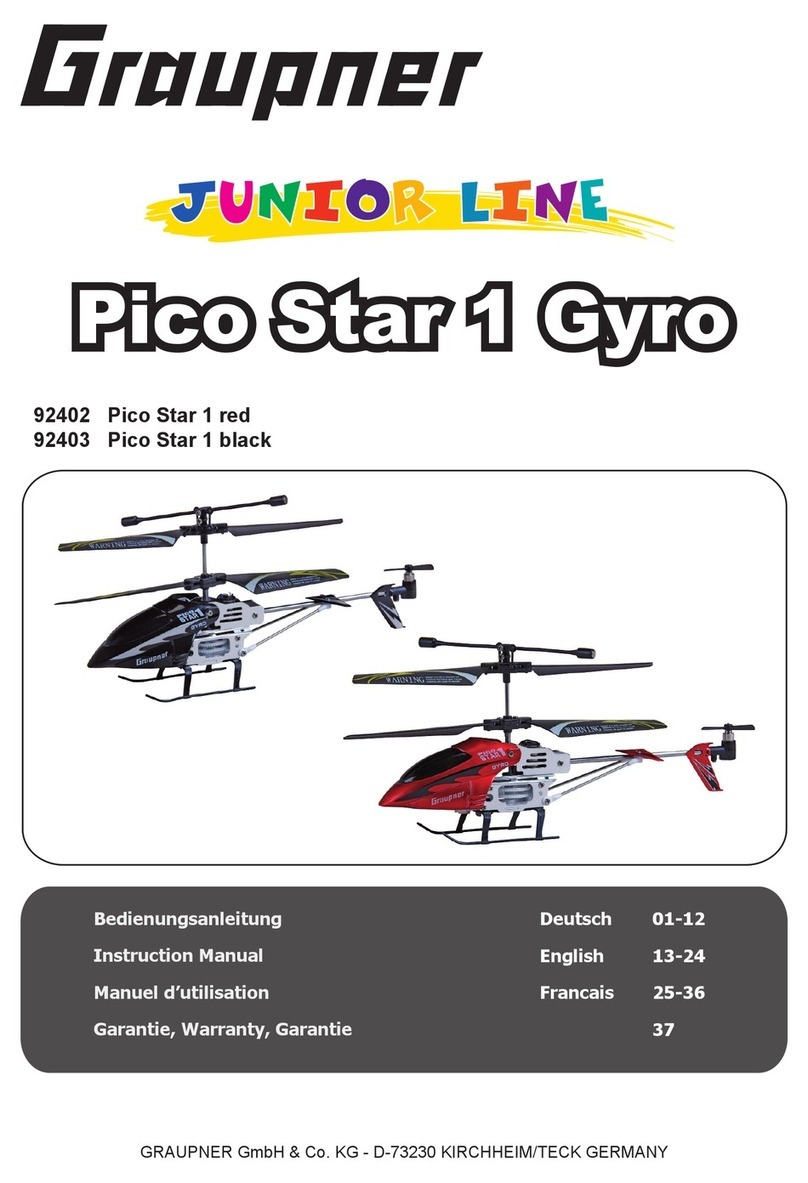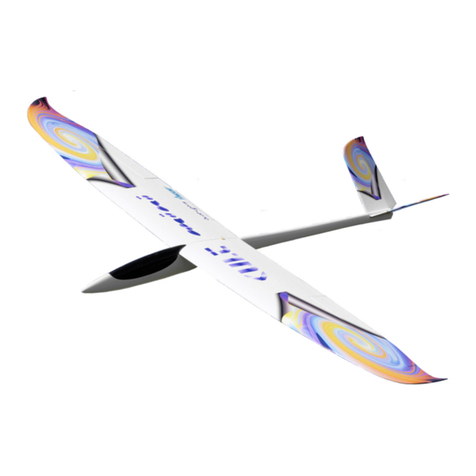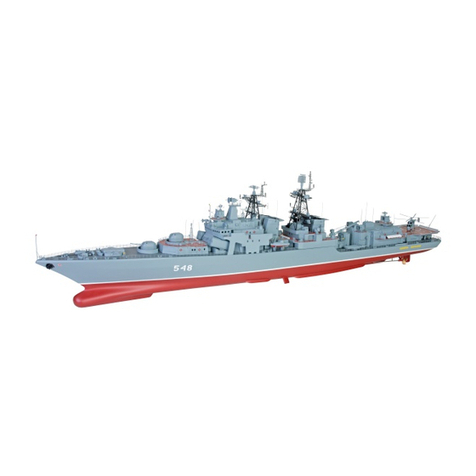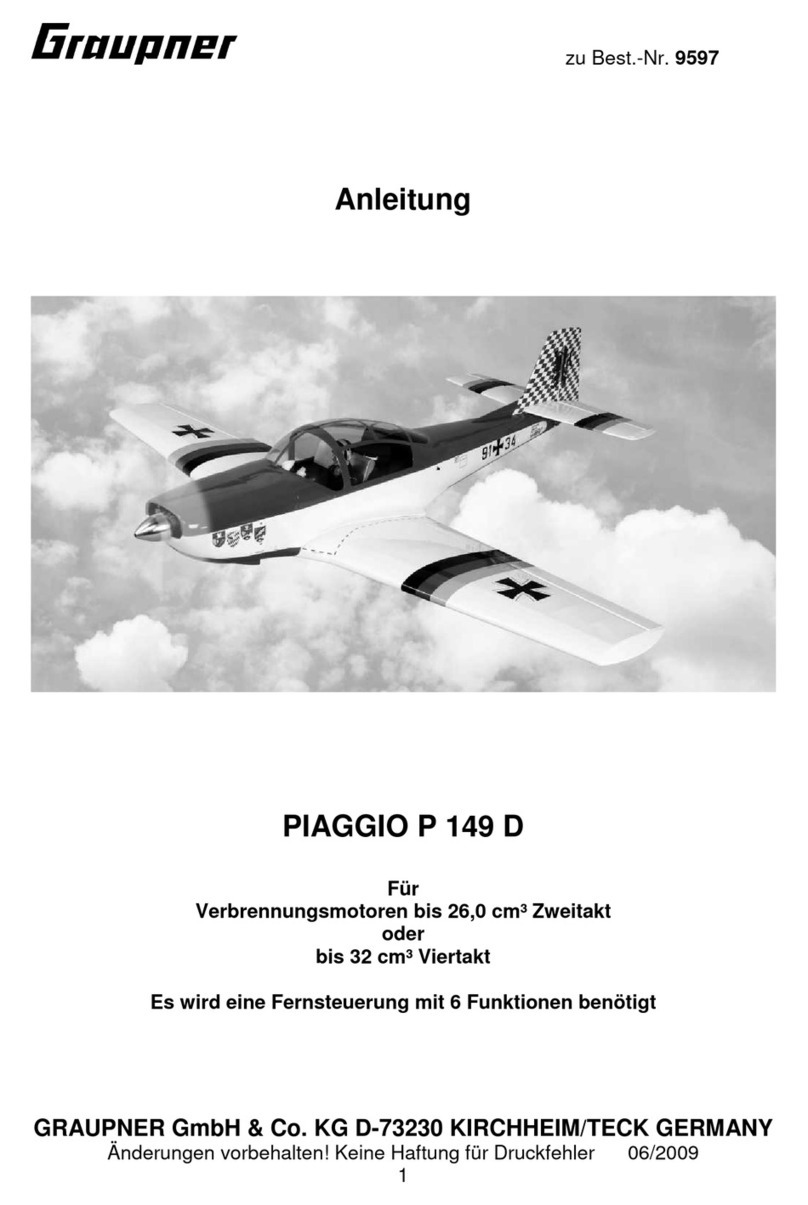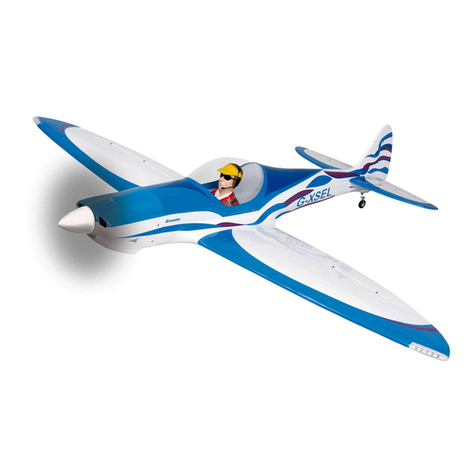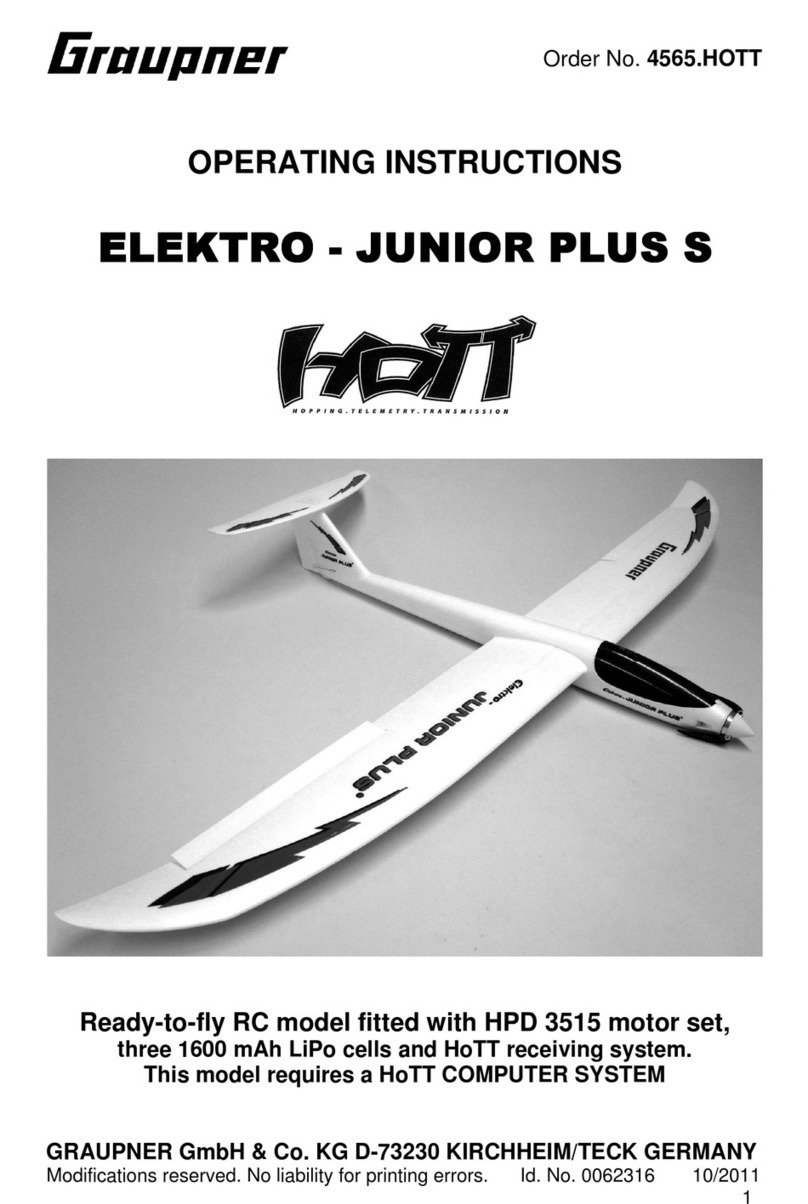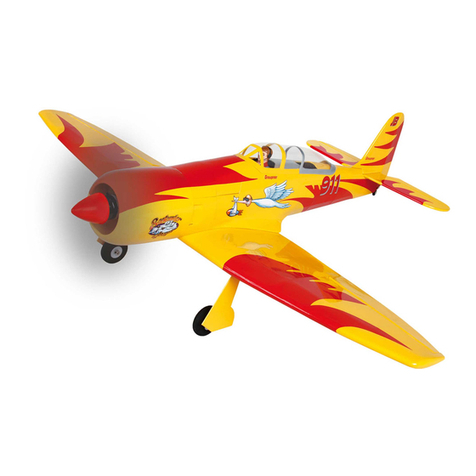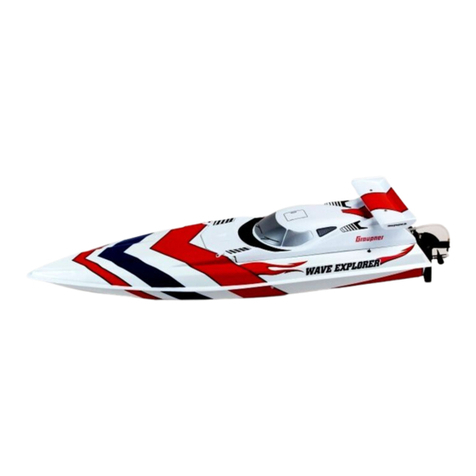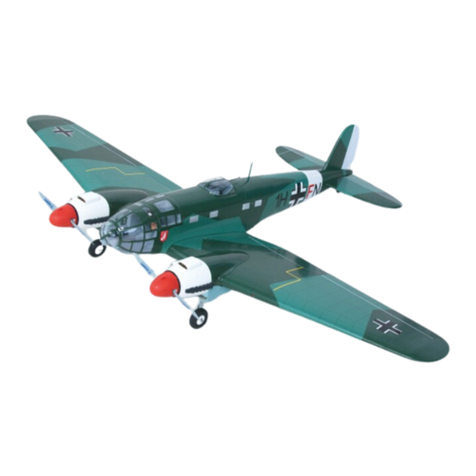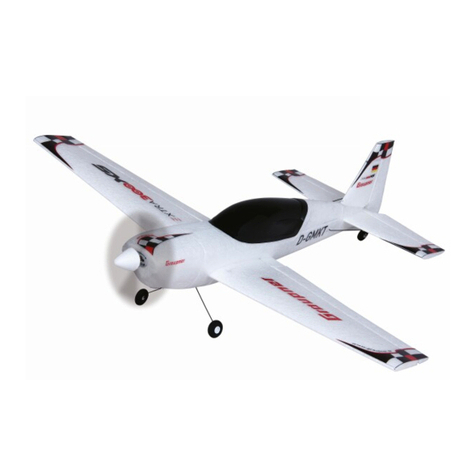
2
Caution: this model is not a toy!
If you are a beginner to this type of powered model, please ask an experienced model flyer for help
and support. If you attempt to operate the model without knowing what you are doing, you could easily
injure yourself or somebody else. Please keep your safety and well-being in mind at all times.
Important: before you start construction
Even if you have already built many RC model aircraft, please read right through these instructions
very carefully, and check that all the parts of the kit are present. We have taken great trouble to keep
the building effort required to an absolute minimum, without allowing any compromises in the area of
safety.
Note regarding the film covering
Minor creases or bubbles may develop in the film covering due to major fluctuations in weather
conditions (temperature, humidity etc.); in rare cases you may even find a slight warp in a component.
These minor faults are in the nature of film-covered built-up wooden structures, and can easily be
corrected using a heat gun, as commonly used for modelling.
Creases: Blow warm air over the area and rub down with a soft cloth.
Wing warp: Hold the panel twisted gently in the opposite direction to the warp, and apply warm
air to remove the creases from the covering.
Caution! do not heat the film more than is absolutely necessary. If the air or the iron is too hot, the film
may melt and holes may be formed.
This model is highly pre-fabricated and can be built in a very short time. However, the work which you
have to carry out is important and must be done carefully. The model will only be strong and fly well if
you complete your tasks competently.
Please work slowly and accurately!
When self-tapping screws have to be screwed into wood, apply a little white glue to prevent
them shaking loose: just squirt white glue into the hole and fit the screw.
Operating the ELEKTRO KADETT:
Before you attempt to operate the model it is essential to read right through the assembly and
operating instructions very carefully. You alone are responsible for the safe operation of your
radio-controlled model. Young persons under fourteen years of age should only be permitted
to operate this model under the instruction and supervision of an adult who is aware of the
hazards involved in this activity.
Please keep these operating instructions in a safe place. If you ever dispose of the model, be
sure to pass them on to the new owner.
If you have any questions regarding the safe operation of your RC model aeroplane, please
turn to your local model shop in the first instance, where the staff will be pleased to help you.
Radio-controlled model aircraft are very demanding and potentially dangerous objects. As
such they require a high level of technical knowledge and skill, together with a responsible
approach.
In legal terms our models are classed as aircraft, and as such are subject to legal regulations
and restrictions which must be observed at all times. Our brochure “Modellflugrecht,
Paragrafen und mehr” (Model Aviation Law, Legal Requirements and more) is available under
Order No. 8034.01, and contains a summary of all these rules. Your local model shop should
have a copy which you can read. There are also Post Office regulations concerning your radio
control system, and these must be observed. Refer to your RC system instructions for more
details.
Be sure to use only those parts included in the kit, together with other genuine Graupner
accessories and replacement parts as recommended expressly by us. Even if you change a
single component you can no longer be sure that the system will work reliably, and such
changes also invalidate your guarantee.

